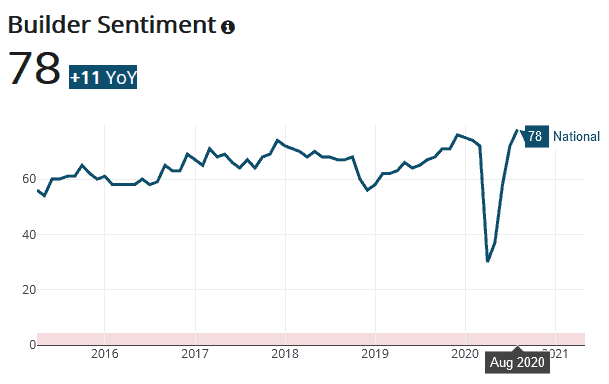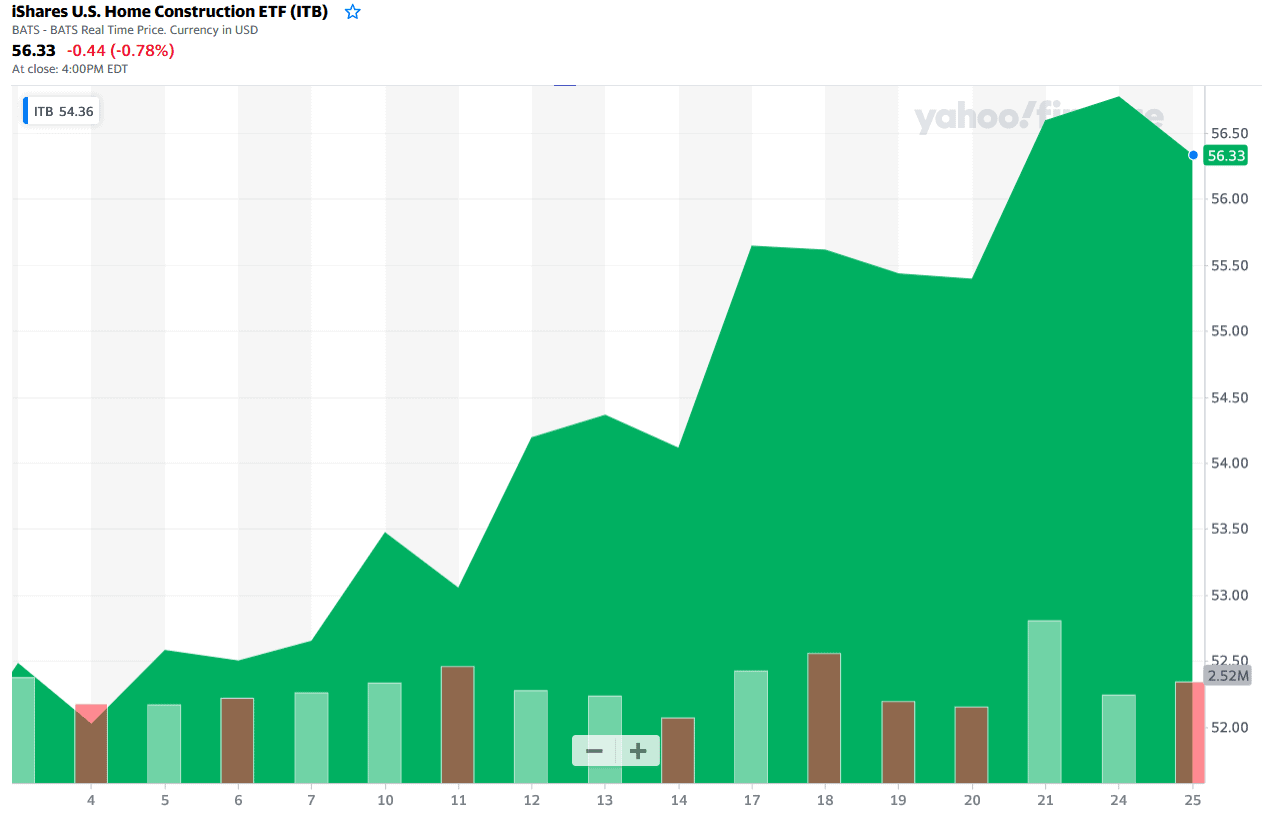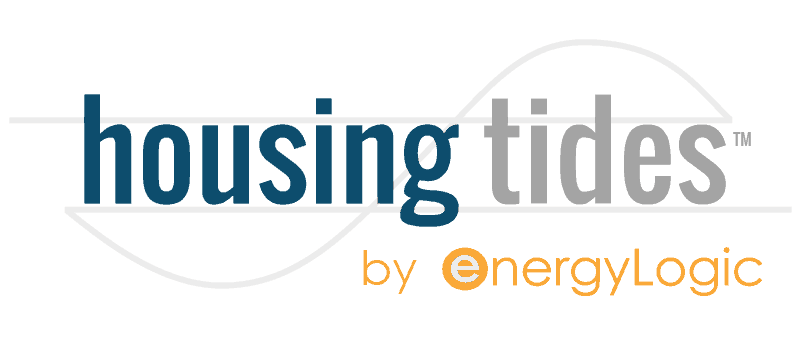Builders are more optimistic despite insufficient housing supply, due in part to restrictive zoning and labor challenges.

Published August 26, 2020
Builder Confidence Climbs
This monthly review of the sentiment of builders conducted by the National Association of Home Builders and Wells Fargo jumped to a record high in its 35-year existence. From July to August the index rose six points to 78.

Homebuilder sentiment shown in Housing Tides rises in August to a new multi-year high after a sharp decline in recent months.
This is a remarkable feat given that in March 2020 home builders faced a perilous future full of uncertainties. A precipitous drop was quickly followed by a sharp “V”-shaped recovery. This was a script that no industry expert could have written as the COVID-pandemic gripped the nation in March. Builders that were making disaster plans in April are now boasting that they expect to exceed business plans for 2020 if they can complete construction on all their sales. Most are raising prices in their communities. Mortgage interest rates are at historic low levels pumping up demand.
Builders were clearly benefiting from the severe shortage of existing home for sale. There were too few homes even before the pandemic struck, and now few homeowners are willing to put their home on the market. Evidence of this is found in Housing Tides with its monthly monitoring the resale market. The CARES Act passed earlier this year into law allowed for forbearance on foreclosures eliminating more potential housing inventory.
Tip! Housing Tides tracks home builder confidence monthly. We recognize this along with other important market indicators and industry variables that compose the Housing Tides Index™.
Extreme Shortage of Housing Supply

Housing Tides shows surprising strength in housing demand has resulted in the lowest level of supply in years.
That shortage drove the median price of a home sold in July up 8.5% annually to $304,100. This is a record high nominal price but also the highest price when adjusted for inflation. Redfin’s report is included in Housing Tides and presents the average resale price at $311,000.
The United States also has faced a housing shortage. Up for Growth, a housing research group, estimates from 2000 to 2015, 23 states under-produced housing to the tune of 7.3 million units (or roughly 5.4% of the total housing stock of the U.S.) which has created a supply-and-demand imbalance that is reflected in today’s home prices. Up for Growth also states that housing starts have not kept up with household formations since 2011.
Tip! This can also be studied in Housing Tides homebuilding permit forecasts which covers the 50 major U.S. housing markets in the U.S., monitoring permit issuance and permits per household data.
Restrictive Zoning & Policy Hinders Construction Growth
The current imbalance in housing supply and demand continues a longer-term trend that markets have experienced for decades — restrictive local development and land-use policies that reflect opposition to high-density, multi-family urban growth as well as yielding to NIMBY opposition. These policies also are a form of structural racism that has led to segregation and limit the benefits of home ownership for people of color. These policies include:
- Zoning restrictions, which create a shortage of zoned high-density sites.
- Escalating and misaligned fee structures, such as impact and linkage fees.
- Poorly calibrated inclusionary housing requirements.
- Lengthy review processes that invite gaming and abuse by growth opponents and that can delay projects, create unpredictability, reduce incentives to invest, and increase the per-unit of cost of development.
Tip! When using the Housing Tides Media Analysis within the interface, you can click on the real estate news activity within each selected market to see the effect of zoning issues on prospective housing projects.
Builder Are Optimistic, but Challenges Are on the Horizon
It appears that home builders have gotten out of the woods quickly on the COVID Recession. The public home builders are all enjoying a jump in their stock prices last week.

Yahoo! Finance graph of ITB index of public homebuilders, last 30 days.
Smiles are on their faces once again. The question is now, how long will these conditions be favorable? Will lumber and other commodity prices increase to new highs as well? Labor shortages and the inefficiency of working around COVID restrictions will continue to drag production and slow deliveries.
Tip! Keeping a close eye on construction cost trends by using Housing Tides can help provide greater confidence when making business decisions.
Outlook From an Industry Veteran
Builders are now in preparation of their 2021 business plans. From my forty-year experience as a home builder, I am sure that the builders will exude optimism. I hope that these plans include ways to increase the rate of minority home ownership, the best way to grow wealth and provide economic opportunity on an equal basis. Expose zoning restrictions and NIMBYism that have led to the severe housing shortage as an imbedded form of structural racism. Build more affordable housing by increasing density and lowering fees. Use down payment assisted programs and recalculate underwriting requirements for people of color.
Ready to explore the depth of data in Housing Tides?
Sign-up for a Housing Tides account to access the interface and dive into the data!
For a limited time only, we're offering complimentary access to Housing Tides. Don't miss out!
About Jeff Whiton
Jeff formerly headed operations for Lennar and KB Home in Colorado building nearly two per cent of the state’s total single-family housing stock. He was honored as Colorado’s Home Builder of the Year in 2001. Whiton also served as the CEO of the Home Builders Association of Metro Denver for eight years reviving the association from near bankruptcy after the Great Recession.






